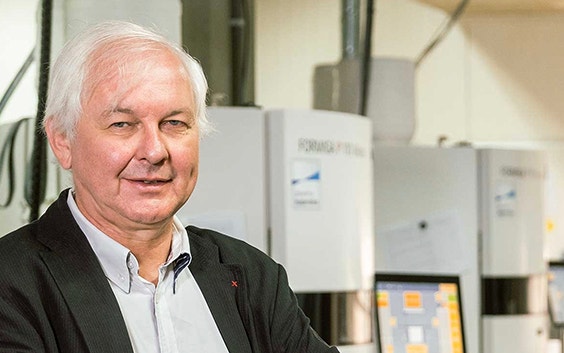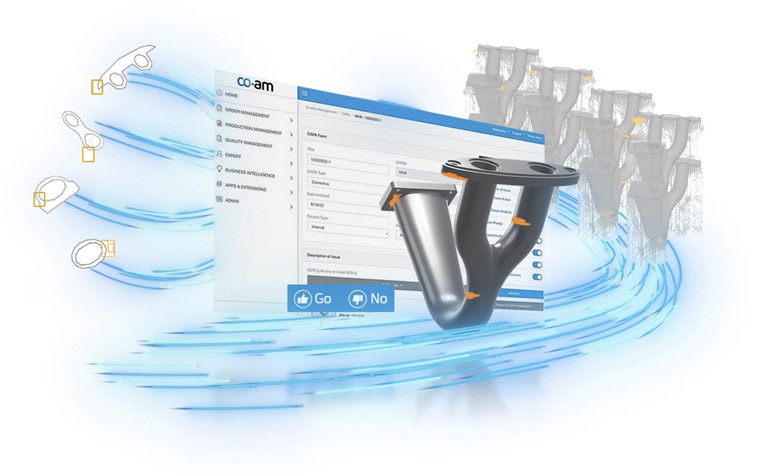EXPERT INSIGHT
The Slow Revolution in a Post-Wintel Era

In 1990, my wife Hilde and I embarked on a remarkable journey by co-founding Materialise, driven by our desire to harness the potential of 3D printing to make a difference. We recognized from the outset that this digital technology had the power to revolutionize industrial manufacturing, as well as to improve and save lives.
From early on, I grasped a fundamental truth about 3D printing — it would be a "Slow Revolution." To this day, I hold onto this conviction, as it perfectly encapsulates the growth potential of this technology as well as the impact it delivers to various industries and our society at large.
Over the years, the 3D printing industry tirelessly championed the unparalleled benefits of this technology, striving to convince manufacturing companies of its potential. However, a survey commissioned by Materialise has unveiled a notable shift. Manufacturing companies are no longer in the dark about the unique advantages of 3D printing but are starting to approach it strategically, envisioning its use for producing end products. As they embark on this transformative journey and ramp up their production capacities, they are confronted with challenges. Most prominently, they grapple with the scarcity of a skilled workforce and the expertise required to seamlessly integrate 3D printing into their existing production processes. They are convinced of the immense business value that 3D printing can bring, but they encounter hurdles in the onboarding process and scaling up. In essence, the 'why?' has transitioned into 'how?’. This signals a shift that may potentially slow down the pace of 3D printing’s adoption across industries.
Yet, I believe that this is not the only challenge awaiting companies ready to embrace 3D printing. Many companies are still facing a big challenge to build an effective and reliable digital backbone that is essential for the stable use of 3D printing. In the 1990s and early 2000s, the remarkable partnership between Intel and Microsoft, often referred to as "Wintel," played a pivotal role in propelling the computer industry to new heights. By providing a standardized platform for hardware and software, Wintel established a stable and harmonious ecosystem. Despite occasional concerns regarding competition, this interoperability led to a rapid surge in software development, an expansive range of applications, and a robust user experience, ushering in the era of the "PC revolution."
Fast forward to today, and the IT landscape is dramatically different. It's a realm characterized by a myriad of platforms, interfaces, operating systems, cloud computing providers, IoT devices, and more. This diversity offers users a wealth of options and flexibility, but it also introduces complexity and escalated costs. In the context of 3D printing, an inherently digital technology, this complexity can be particularly problematic. Companies in this industry must commit resources to ensure their printers and accompanying software are compatible with an array of devices, operating systems, business applications, and file formats. This not only incurs costs but also diverts resources that could otherwise be channeled into innovation and growth. This complexity may hinder the growth of the 3D printing industry, where interoperability and compatibility are paramount, consequently delaying the advent of distributed manufacturing.
With CO-AM, our digital manufacturing platform, we rise to meet these challenges, offering manufacturers an open software platform to effectively manage, scale, and standardize their production workflows across intricate supply chains and diverse IT environments.


As my tenure as CEO of Materialise draws to a close, I fondly reminisce about those early pioneering days and the electrifying excitement that accompanied our radical notion of using 3D printing to tackle real-world challenges. Now, 33 years later, I find myself even more enthused when I contemplate the future of 3D printing. I wholeheartedly believe that the best is yet to come.
One of 3D printing's most remarkable attributes is its capacity to craft intricate shapes that were previously deemed unattainable through traditional manufacturing methods. This distinctive feature has cemented 3D printing's place as an innovative production technology by allowing the creation of more functional parts, such as more energy-efficient engines and heat exchangers that are essential in the battle against global warming. However, the challenge has always been offering this capability at an industrial cost level. It has kept 3D printing from entering the Premier League arena of traditional manufacturing.
Today, the landscape is shifting, with faster, larger, and more efficient machines tailored to specific applications entering the scene. This development has ignited a newfound vigor within our industry, as the dream of using 3D printing for truly large-scale production becomes an attainable reality.
I believe that this is the true promise of the "Slow Revolution" — the ability to seamlessly integrate 3D printing's design capabilities into industrial-scale production processes at an industrial-scale cost level. This vision is slowly taking shape, with leading manufacturers worldwide, in China, Europe, and the US leveraging more performant, efficient, and cost-effective machines, tweaked for specific applications, to mass-produce parts and products by the millions, from intricate hinges for foldable smartphones to stylish cases for smartwatches, all at competitive costs.
Back in 2015, GE Aviation began printing fuel nozzles for jet engines, delivering a 15% improvement in fuel efficiency while reducing the number of parts in each nozzle from twenty to one. GE’s fuel nozzle quickly became our industry’s poster child. At Materialise, we've crafted a digital medical image-based workflow that showcases 3D printing's ability to create personalized healthcare solutions, and we've pioneered the world's largest 3D-printed eyewear business, allowing designers to explore complex shapes, intricate structures, and rich textures.
Undoubtedly, our industry will continue to imagine, innovate, and develop groundbreaking applications that harness the unique strengths of 3D printing. Meanwhile, as we look for the next meaningful application to rekindle the excitement in our industry, the "Slow Revolution" is taking shape right before our eyes.
Under the capable leadership of our next CEO, Brigitte de Vet, Materialise will continue to identify and nurture meaningful applications that may one day rival our established medical and eyewear businesses. All the while, we remain steadfast in our commitment to promote and grow the unstoppable manufacturing force that is 3D printing, as it continues its "Slow Revolution" within the realm of industrial manufacturing.
Share on:

Meet the author
Fried Vancraen
You might also like
Never miss a story like this. Get curated content delivered straight to your inbox.
